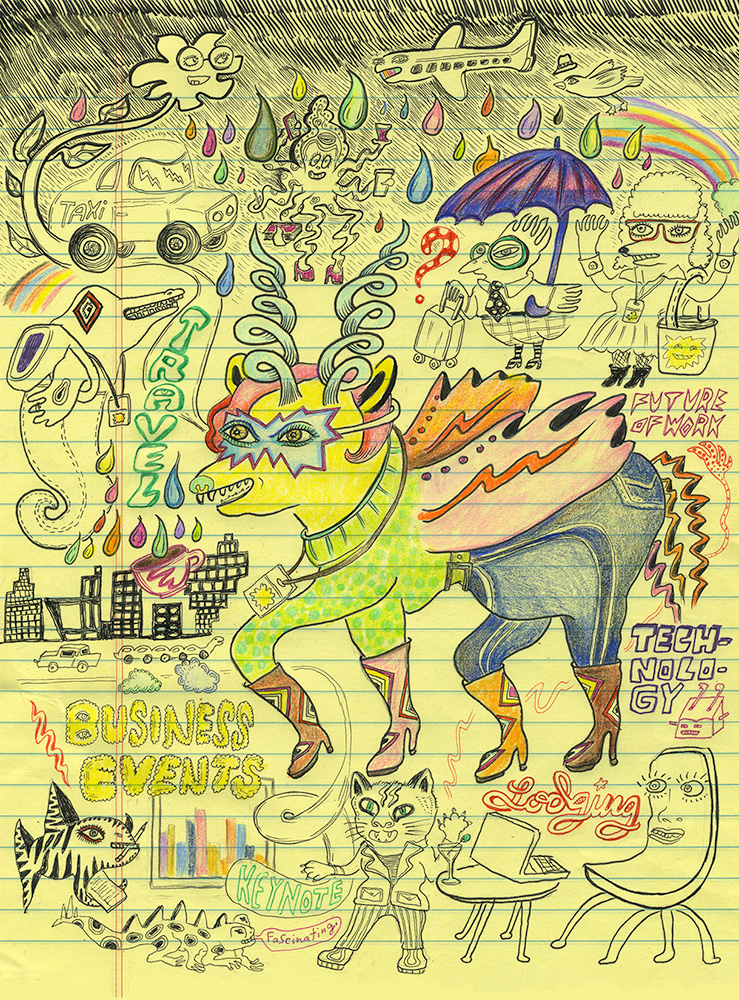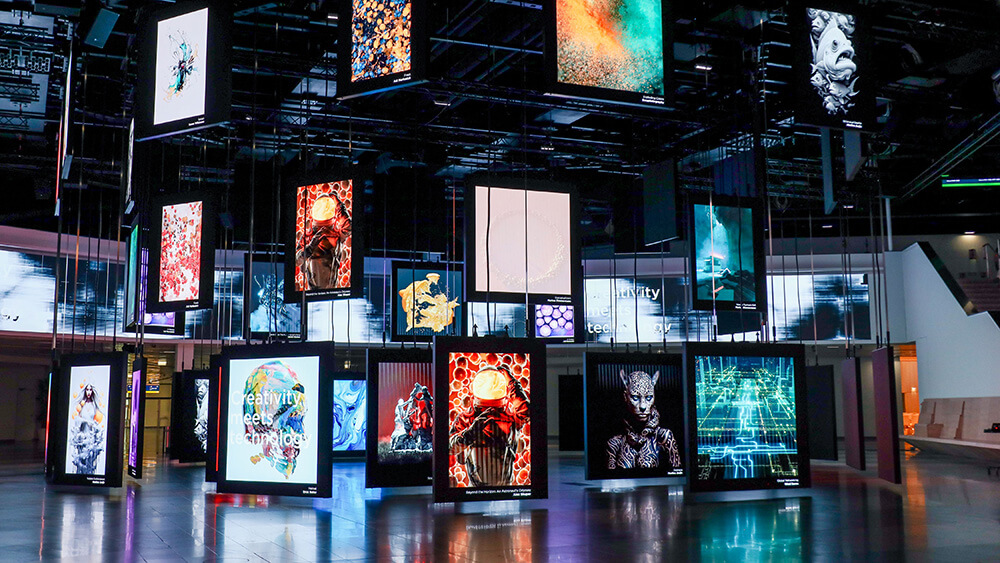
Illustration by Julie Murphy
Annual Events Industry Forecast
Our usual approach to Convene‘s Annual Industry Forecast is to cast a wide net, gathering a variety of data related to the business events industry, including travel, lodging, technology, and the workplace. This year, we took a different tack. Instead of those wide-ranging forecasts, Convene editors wrote succinct trends reports for each sector. We’ve sifted through the research to come up with a few signposts to help you navigate the year ahead, whatever course it takes. And, as always, the Forecast includes our Annual Meetings Market Survey, which gives us a strong sense of where we stand at this moment in time — the ups, the downs, the challenges, and our overall mood.

To help planners create more immersive experiences, Austria Center Vienna offers them the polySTAGE, a flexible 3,300-square-foot video display made up of 52 LED panels, combined with an LED banner, two LED side walls, and a spatial audio display. (Ilkhan Erdogan photo)
A little more than half of meeting organizers surveyed in Freeman’s 2024 Organizer Trends Report considered technology, including apps and digital displays, to be the top experiential element at meetings. And although attendees also ranked technology highly — 44 percent chose it as the leading experiential element — many more — 64 percent — put immersive experiences at the top of the list.
One factor behind the gap is the fact that more event participants now take it for granted that technology will be embedded in their everyday lives, compared to earlier generations of meeting attendees, said Ken Holsinger, Freeman’s senior vice president of strategy and research. In five years, three-quarters of meeting attendees will be Millennials and Gen Z, for whom using their phones to check in at meetings and hotels; using apps to navigate meeting agendas and find their way around; and asking chatbots for help is second nature.
RELATED: The Rise of Humans in an AI World
To help planners create more immersive experiences, a growing number of convention centers have added digital resources, including large-scale LED walls. Last year, for example, Austria Center Vienna unveiled the polySTAGE, a flexible 3,300-square-foot video display made up of 52 LED panels, combined with an LED banner, two LED side walls, and a spatial audio display. But for planners already challenged by rising technology costs, the demand to create the kinds of high-tech, awe-inducing spectacles that bring collective gasps from their audiences could stretch their budgets to the limit.
One trend that could take the pressure off is a surge in creative, yet low-tech immersive experiences at conferences. Some notable examples include local musicians who turned meeting participants into an emotional a cappella choir at the opening keynote at Convening EMEA 2023 in Copenhagen, and the workshops led by Marc Forgette, a French Algonquin member of the Apitipi Anicinapek Nation in northeastern Ontario, Canada, who tells stories designed to increase understanding of Indigenous history as participants make moccasins. And at a session last May at business and creativity conference C2 Montreal, participants talked about their experiences with neurodiversity while making lasagna.
Barbara Palmer is deputy editor at Convene.
